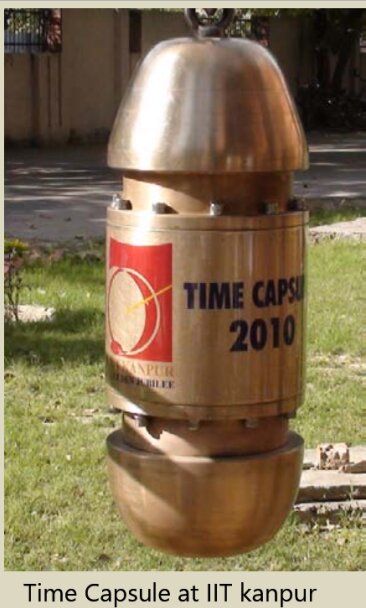Context
- Recently, the Ram Janmabhoomi Teerth Kshetra Trust has denied reports about placing of a time capsule under the ground at Ram Temple construction site in Ayodhya.
Back to Basics
What is a Time Capsule?
- It is a container of any size or shape, which accommodates documents, photos and artefacts typical of the current era and is buried underground, for future generations to unearth.
- The time capsule requires special engineering so that the contents don’t decay, even if pulled out after a century.
- Material such as aluminium and stainless steel are used for the encasing, and documents are often reproduced on acid-free paper.
- While the term “time capsule” was coined in the 20th century, among the earliest examples of one dates back to 1777, found by historians inside the statue of Jesus Christ in Spain during its restoration.

- The International Time Capsule Society (ITCS), based in the US and formed in 1990, is now defunct but continues estimating the number of time capsules in the world. As per its database, there are “10,000-15,000 times capsules worldwide”.
Time Capsules In India
- Outside the Red Fort
- At IIT Kanpur Campus
- At The Alexandra Girls’ English Institution, Mumbai
- At Jalandhar’s Lovely Public University
Famous Time Capsules in the World
- Samuel Adams and Paul Revere Time Capsule
- The “Century Safe”
- The Crypt of Civilization in Georgia:
- The Voyager and Voyager II Spacecraft
